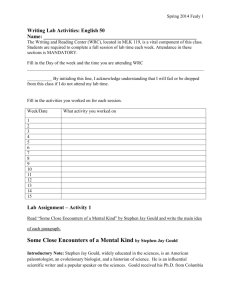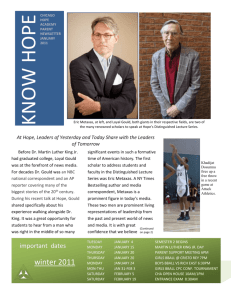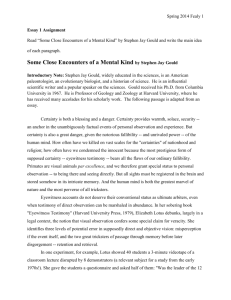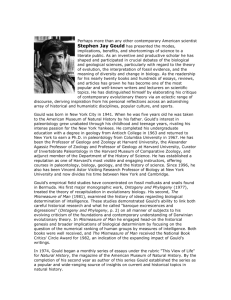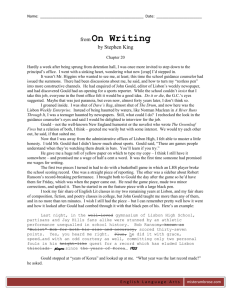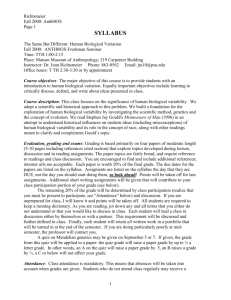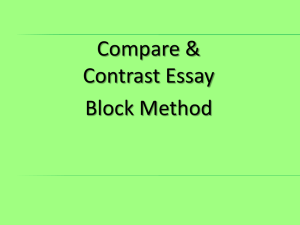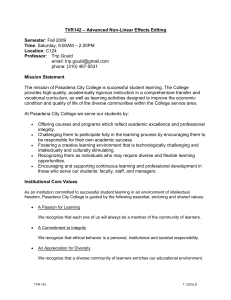Some Close Encounters of a Mental Kind
advertisement
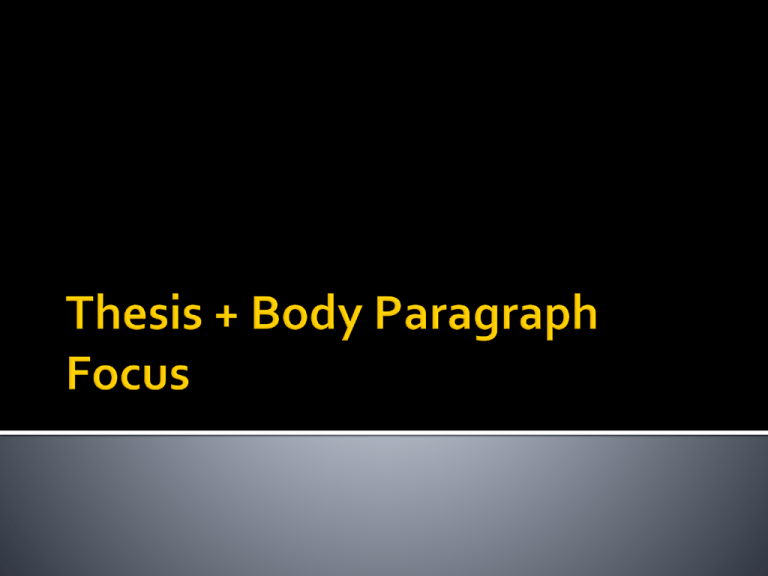
How does Gould attempt to shake our belief in the credibility of what we see or remember seeing? To what extent does his essay convince you to doubt what people perceive or remember? To develop your essay, discuss specific examples from your own experience, your observation of others, or your reading – including “Some Close Encounters of a Mental Kind” itself. Looking at how the question helps you to organize your essay How does Gould attempt to shake our belief in the credibility of what we see or remember seeing? • Review: Use the first question to determine what you will be writing your directed summary (introduction) about. Look for the parts of the prompt essay that help you answer this question. To what extent does his essay convince you to doubt what people perceive or remember? • Use the second question to help you write your thesis statement. • In this case, think about how much you agree with Gould. • Completely agree? • Disagree? • Agree with some things and disagree with others? I was very convinced by Gould that people should doubt what they see and remember. Although Gould’s essay shows that people should doubt the memories of what they’ve seen, I am not convinced that people should doubt what they actually see. To develop your essay, discuss specific examples from your own experience, your observation of others, or your reading – including “Some Close Encounters of a Mental Kind” itself. • Use the third part of the question to understand the kinds of evidence that you could use to help you prove your thesis. • Your own experience • Things you have observed • Things you have read • You can even mention Gould’s ideas to help your back up other examples you use. Controlling idea sentence (the topic sentence) Corroborating Details (examples you will use to explain and prove the point) Careful description of the details’ relevance (explain how each example proves the point you are making in the paragraph) Connection to the thesis statement (tell your reader what the paragraph’s point and examples have to do with your argument) Idea/Topic Sentence; it includes: C#1 Controlling › Transition › Connection to thesis › Clear indication of the upcoming paragraph’s focus YOUR Example(s) C#2 › Your experience › Your observation of the world › OTHER readings › Popular culture › NOT Gould(or your original source) Connection / Relevance C#3 › Explain why your example is important Compare and contrast to Gould (what you are responding to) Compare and contrast to a “larger” example Relate to a theory/statistics about the controlling idea Discuss how the controlling idea applies to society at large C#4 Connect to the thesis › If you did your job with the other C’s, you already did this! One convincing aspect of Gould’s argument relates to problems with retrieving memories. I too have had difficulties with mixing up two memories. Just last month, I was having a talk with my girlfriend, and she asked me what my favorite memory was. Of course, I wanted to try to make her feel good, so I told her that it was of our first date when I drove her to the Santa Monica pier and we spent the day (and had our first kiss) on the beach. Immediately, she got really mad at me, but I didn’t know why at first. It turned out that we hadn’t gone to the beach for our first date. We’d gone to the movies. The beach memory was actually with my girlfriend before her. Sadly, once my girlfriend realized that I had mixed her up with someone else and that my memory wasn’t with her, she got jealous. The whole thing embarrassed me a lot, and my girlfriend and I eventually broke up. This situation demonstrates the same point Gould was talking about when he told readers about his Devils Tower experience. In his mind, his memories of Devils Tower and Scotts Bluff must have mixed over time, and a new memory—a false one—was created when he tried to retrieve what Devils Tower looked like. He too got embarrassed when his memories got confused. At least, however, he didn’t lose a girlfriend over it! Both of our examples demonstrate that the memories of two separate events can become twisted together in the retrieval stage and can cause people to make mistakes. Now think of controlling ideas that you might use for body paragraphs (reasons you found Gould convincing or not) Then think of examples that could support those Share with a group
